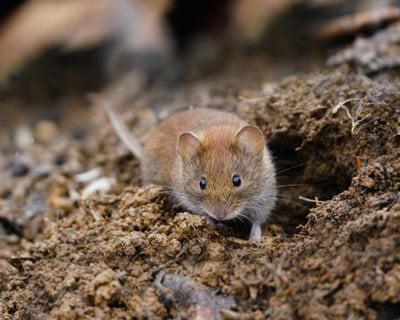Mastering Vole Bug Control: Thorough Insights on Problem Prevention and Treatment Strategies
By recognizing the subtle indicators of vole infestation early on, we can take positive actions to stop prevalent damages. In this conversation, we will certainly explore the subtleties of vole habits, dig into the recognition of problem signs, and discover the most reliable avoidance and treatment techniques.
Comprehending Vole Behavior
Checking out the foraging patterns of voles provides useful insights into their actions and habitat preferences. By observing their foraging actions, researchers can acquire a far better understanding of where voles prefer to develop their environments and the degree of their environmental impact.
Study indicates that voles display discerning feeding practices, liking tubers, origins, and seeds. This nutritional preference affects their foraging patterns, leading them to locations rich in greenery and ground cover. Furthermore, voles are known to produce intricate tunnel systems for foraging and nesting functions, showing a high level of versatility to their environments.
Recognizing vole behavior is important for applying targeted parasite control measures that interrupt their habitat preferences and foraging tasks (vole control). By studying their actions, professionals can establish more effective avoidance and treatment strategies to take care of vole problems

Identifying Signs of Vole Infestation
Vole infestations can be detected by identifying details signs of their existence in an area. One of the most usual indications of a vole invasion is the presence of surface area runways. Voles create networks of slim paths on the ground that are normally about two inches wide. These paths are commonly discovered in grassy locations or below compost or ground cover where voles can relocate freely and search for food.
An additional key sign of vole invasion is the existence of small burrow openings in the ground. Voles dig superficial burrow systems with several entryways and leaves. These burrows work as sanctuary and nesting sites for the voles. In addition, voles are recognized to leave behind eaten plant stems, roots, and bulbs near their burrow openings, indicating their feeding task in the area.
Finding these droppings along runways or near burrow openings can confirm a vole invasion. By being alert for these indications, building proprietors can promptly address vole infestations and prevent further damage.
Executing Proactive Prevention Steps

Furthermore, utilizing natural vole deterrents like castor oil-based repellents or killer urine can work as efficient preventive actions. It is likewise recommended to regularly evaluate outdoor areas for any indications of vole task, such as runways or delve openings, to address prospective problems immediately. vole pest control. By embracing these proactive prevention approaches, home proprietors can substantially lower the possibility of vole damages and keep the health and looks of their landscapes
Effective Therapy Strategies
Integrating targeted capturing approaches and making use of approved rodenticides are vital parts of reliable treatment methods for advice handling vole problems. Capturing can be an efficient way to decrease vole populaces, specifically when positioned purposefully in their active runways. Snap traps and live traps can both work, with the latter enabling the capture and moving of voles. When making use of rodenticides, it is critical to follow safety guidelines to avoid injury to non-target pets and pet dogs. Area rodenticides in safe and secure bait stations to minimize risks to unplanned targets. Additionally, environment alteration, such as minimizing ground cover and removing resources of food, can aid discourage voles from infesting a location. Normal monitoring and maintenance are likewise essential aspects of successful treatment methods to make sure that vole populations are kept under control. By incorporating capturing, rodenticides, habitat alteration, and constant monitoring, effective vole parasite control can be achieved.
Surveillance and Maintenance Tips
Keeping a systematic timetable for tracking and conducting routine maintenance activities is crucial to maintain the efficiency of vole insect control actions. Normal tracking enables the early discovery of vole activity, enabling punctual intervention prior to problems aggravate. To effectively keep an eye on vole populaces, strategically put traps can be used in vole paths or near burrow entrances. By regularly inspecting these traps, residential try these out or commercial property proprietors can evaluate the degree of vole task and adjust control methods as necessary.
Furthermore, keeping a tidy and well-kept landscape is crucial in vole prevention. Clearing away particles, such as stacks of timber or thick vegetation, eliminates potential vole habitats. Consistently trimming and mowing lawns greenery helps in reducing vole hiding spots and reduces their accessibility to food sources.
Moreover, continuous upkeep of physical obstacles, such as fencings or cord mesh, is essential to avoid vole intrusion. Evaluating and repairing any damages to these structures guarantees that vole control remains effective in protecting residential or commercial properties from invasions. By integrating these surveillance and upkeep methods into a thorough vole parasite control my explanation strategy, people can successfully handle vole populations and protect their properties from damage.
Verdict
To conclude, grasping vole insect control needs a strong understanding of vole actions, the capability to identify indicators of problem, applying positive avoidance procedures, efficient treatment strategies, and constant monitoring and upkeep. By taking a thorough strategy to vole control, individuals can properly handle and prevent problems, eventually protecting their residential or commercial property and surrounding setting from damage triggered by these small rats.
In this discussion, we will explore the nuances of vole behavior, delve into the recognition of problem indications, and uncover the most effective prevention and treatment techniques.Incorporating targeted trapping approaches and using accepted rodenticides are necessary components of effective treatment methods for managing vole invasions. To effectively check vole populations, purposefully positioned traps can be utilized in vole runways or near burrow entries. Inspecting and repairing any damages to these structures ensures that vole control continues to be efficient in guarding buildings from infestations. By including these surveillance and upkeep techniques right into a comprehensive vole pest control plan, people can effectively manage vole populaces and protect their buildings from damages.